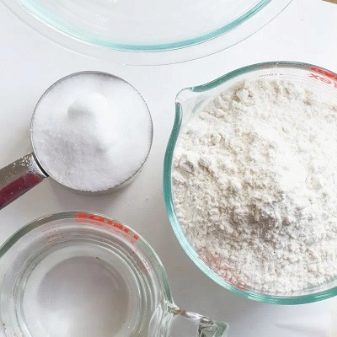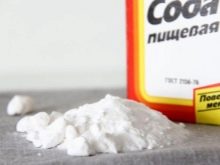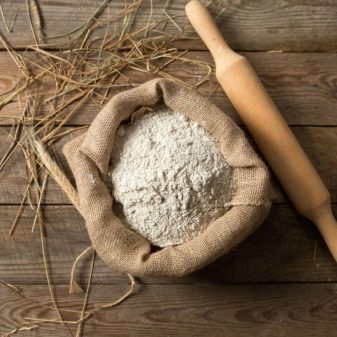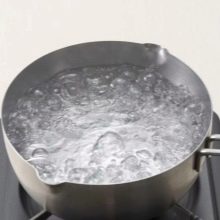Salt dough recipes for sculpting crafts

Salted dough is a high-quality, and most importantly, a cheap alternative to purchased plasticine. It is quite possible to make this safe material for creativity on your own at home.


Simple options
The simplest recipes for DIY salt dough require the use of foods that are always on hand. It must be remembered that each additional ingredient helps to slow down the drying process of the finished product.
It is possible to dry flat crafts on transparent plastic at room temperature. More complex work is best placed on a battery or left in the sun in the summer. Salted dough can also be heat treated in the oven.



Classical
The classic salty dough consists of only 3 components: flour, salt and water. For the first acquaintance with the material, you will need to use 2 glasses of flour, one glass of Extra salt and 2/3 glasses of pure water. Some masters, however, prefer to combine these products in a 1: 1: 1 ratio. It is important to purchase finely ground salt, otherwise an uneven surface will form on the crafts. The iodized variety of the product should not be taken, otherwise large inclusions will be found in the dough. It is better to add snow-white flour, that is, of the highest grade, wheat or rye, but in no case pancake. The water used for mixing should be as cooled as possible.
During the process, flour and salt are first mixed, and then water is poured into them portion by portion. The dough is kneaded until it stops sticking to your hands.A too liquid substance requires the addition of a small amount of dry components, and a crumbling substance requires water. The proportions may vary depending on the quality of the flour. The resulting substance is packed in a plastic bag or container, after which it is stored in the refrigerator.
During sculpting, it is more correct to pinch off small pieces of salted dough if necessary, leaving the total mass at low temperatures. If the material develops an unpleasant odor over time, it will have to be thrown away.


To diversify the classic recipe, to make the substance more suitable for complex relief work will be obtained by adding glue. This recipe requires the use of a glass of flour, a glass of finely ground salt, a glass of water and 1-2 tablespoons of PVA glue. Flour, salt and, if desired, a small amount of starch are poured into a deep container - about a tablespoon. Separately, in a glass of water, PVA glue is diluted, which is then poured into the dry ingredients. It should, however, be mentioned that some craftswomen prefer to first gradually pour cold water into the mixture, and at the end add glue. The mixture is thoroughly mixed in a bowl, then kneaded by hand until it becomes soft and elastic. By the way, it will be easier to work if you pre-treat your hands with a not too greasy cream.
An unusual recipe for salty dough, which is based on 2 glasses of wheat flour, a glass of salt, 125 milliliters of water and a tablespoon of hand cream. The constituent mixtures are mixed until smooth with a blender, resulting in a soft and elastic substance.



With sunflower oil
At home, it will not be more difficult to make salty dough containing sunflower oil. From the products in this case, 200 grams of flour, 20 grams of soda, 60 grams of salt and 20 grams of vegetable oil will be required. All components are immediately laid out in one container, mixed and put on fire. Stirring constantly, the mixture should be heated until it becomes homogeneous. Turning off the heat, the mass will have to be cooled, and then knead it with your hands. It is enough to do this for about a minute on a table sprinkled with about a teaspoon of flour. If over time such a dough dries up, it can be easily revived with plain water.
A complicated recipe with butter requires the use of 150 grams of flour, half a glass of salt, a couple of teaspoons of citric acid, a tablespoon of vegetable oil and 74 grams of hot water. Coloring and flavoring agents are added to the mixture as desired. If you follow the instructions step by step, you will have to start by mixing flour, salt, citric acid and vegetable oil. The dye is diluted in a separate glass and the liquid is poured into the flour. Finally, the dough is kneaded by hand until the desired condition is obtained.
Before putting it away for storage, it will be correct to supplement the composition with potassium sorbate.



A mixture of rye and wheat flour is also suitable for modeling. Each is taken in the amount of one glass, and the same amount of salt, 0.5 cups of water and a tablespoon of oil are added to them. Rye flour will give the product a beautiful color, while the oil will provide elasticity. In addition, even granulated sugar may be present in the composition of the modeling mass. The work requires 250 grams of salt and wheat flour, 60 grams of sugar, 150 milliliters of water, as well as 30 milliliters of sunflower oil.
First, flour, salt and sugar are poured into a deep container. They are filled with water, mixed well and supplemented with oil. The dough should be kneaded by hand until smooth. The finished mass is wrapped in plastic wrap and put into the refrigerator for at least 3 hours. The combination of the main ingredients with vegetable oil and starch works well.An improved recipe requires a couple of glasses of flour and a glass of finely ground salt, 2/3 of a glass of water and half a glass of potato starch, and a tablespoon of oil. In the absence of potato starch, it is not forbidden to use corn starch. The dough formed after kneading will allow you to create elegant small products.


The process of making salted dough in a microwave oven stands apart. It only takes a few minutes to prepare such a mass. Of the ingredients in this case, two parts of water are required, two parts of white or rye flour, one part of fine salt, as well as a tablespoon of tartar and vegetable oil. First, a deep container is filled with salt, after which water is poured into it, and everything is stirred until the crystals are completely dissolved. Next, in the same way, flour and all other components are introduced into the mixture.
First, the substance is stirred with a spoon or fork, and then poured into a special container for the microwave oven. The device is set to medium power and the timer is fixed at 5 minutes. After processing the dough in the microwave, it must be allowed time to cool, and then knead with your hands.


How to make with gouache?
To make the dough immediately colored, you will have to add a dye to it, for example, gouache, previously diluted in water. This happens at the kneading stage. It is also possible to use dry dye, which is poured into a piece of ready-made dough, after which the substance is kneaded until smooth. For example, you can get a colored mass if you use a glass of fine salt and the same amount of flour, 5 tablespoons of sunflower oil, water and colored gouache. After mixing the dry ingredients, it is necessary to carefully pour in oil and a little water, in which the paint is diluted, to them. You will have to knead such a dough until not only the texture is homogeneous, but also the color.
A complicated recipe for making salty dough involves the use of 250 grams of wheat flour, 130 grams of salt and 120 milliliters of pure water. In addition, work will require 10 grams of gelatin, the same amount of citric acid, 60 milliliters of vegetable oil and gouache paint.



The cooking process begins with the fact that gelatin is poured into the water heated on the stove. The fire immediately decreases to a minimum, and paint, sunflower oil, salt and citric acid are introduced into the gelatinous mass with constant stirring. Flour is the last to be poured into the mixture.
The substance must be stirred until all the lumps dissolve. The saucepan is removed from the heat, and its contents, rolled up in a lump, cool naturally. An alternative to gouache is watercolor, powder, or gel food coloring. However, it will be safer and more interesting to work with bright spices like turmeric and paprika, cocoa or ground coffee, spirulina or natural juice of berries, fruits or vegetables.
It is better to dry finished colored products naturally without baking.


How to prepare large items for sculpting?
For the realization of large children's crafts, the so-called strong dough is considered the best. Basically, it requires the same ingredients as the classic recipe, but in different proportions. It will be possible to make a mass from a glass of flour, two glasses of salt and 125 milliliters of water. You can create with your child using homemade choux pastry. To create it, you need a glass of flour and the same amount of water, half a glass of Extra salt and a tablespoon of vegetable oil, a couple of teaspoons of citric acid and, if necessary, food coloring.
All ingredients are mixed, after which it is recommended to warm them up either in a frying pan or in a thick-bottomed saucepan, stirring constantly. The resulting mass is laid out on a wooden substrate and kneaded with the addition of a small amount of flour. The resulting dough can be stored in an airtight container, removed in the cold, for almost a whole month. The mass is ideal for creating large volumetric figures.


Making a dough with glycerin
Making salt dough with glycerin will give the finished products a natural shine. For cooking, you will need a couple of glasses of freshly boiled water and 500 grams of flour, as well as vegetable oil, 100 grams of salt, a few drops of glycerin and, if desired, dye. First, all dry components are mixed in a deep container, and oil is added to them. Water is boiled in a separate saucepan at this time, and glycerin is introduced into it. Having combined the two mixtures, it is necessary to thoroughly mix the resulting substance and put on a small fire.
The contents of the pan are heated with constant stirring until smooth. The mass is removed from the stove and left to cool naturally. Next, the substance is kneaded by hand until it reaches the required consistency. If it turns out to be too liquid, then it is worth adding a small amount of flour.
The easiest way to knead salted dough is with a mixer.



Another unusual recipe for salty dough requires a combination of 1.5-2 cups of flour, a glass of salt, 2 tablespoons of dry wallpaper glue, 4 tablespoons of glycerin, and 125-150 milliliters of water. After mixing flour and salt, they must be poured with glue diluted in water. The substance is mixed and supplemented with glycerin. In the event that the mass turns out to be too sticky, flour is poured into it. PVA glue can be an alternative to wallpaper glue. Experts recommend using the resulting material for delicate work.
It should be added that it is allowed to add vegetable oil, citric acid or even lemon juice, as well as potato starch to any recipe for making salty dough. Even a mass intended for the smallest children can be enriched with these components of plant origin. Such unnatural ingredients as PVA glue, wallpaper glue and bustilate are advised to be used only by adults. And also any dough will be able to give a pleasant aroma, adding food flavorings, as well as natural vanilla, cinnamon or cloves.


For information on how to make salt dough for modeling with your own hands, see the next video.








